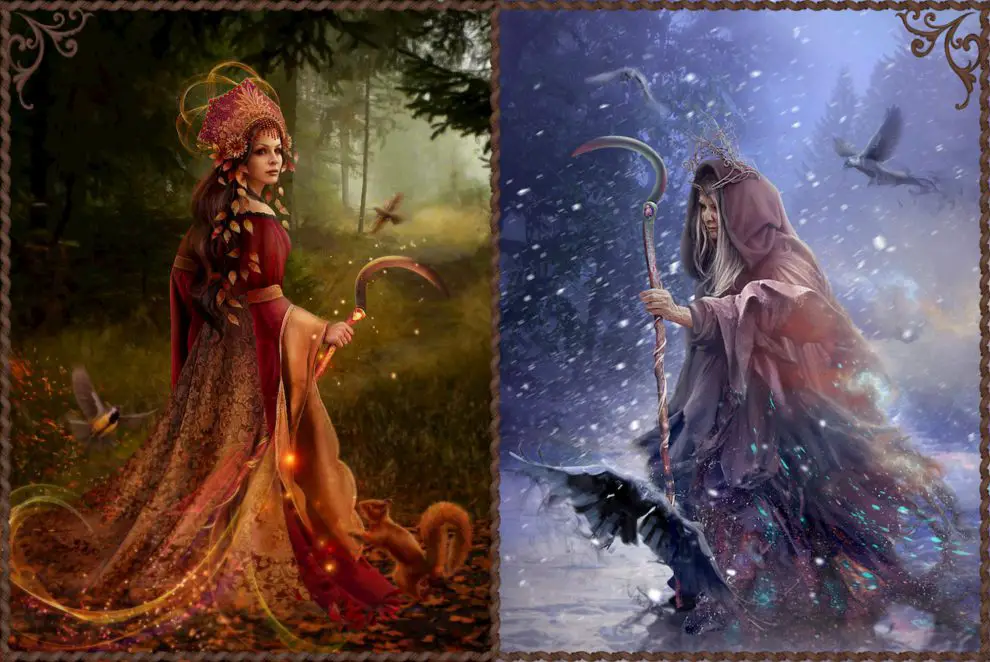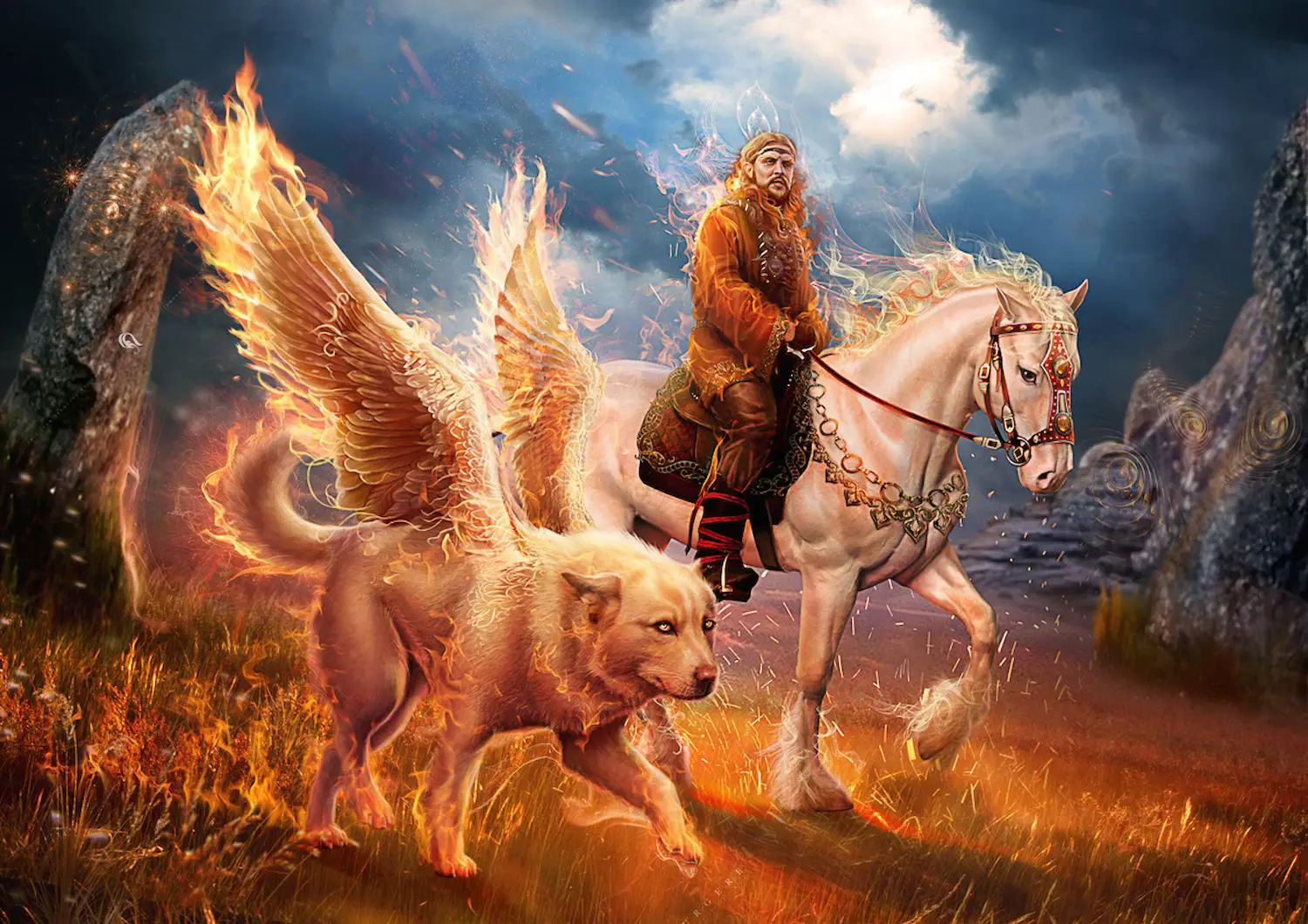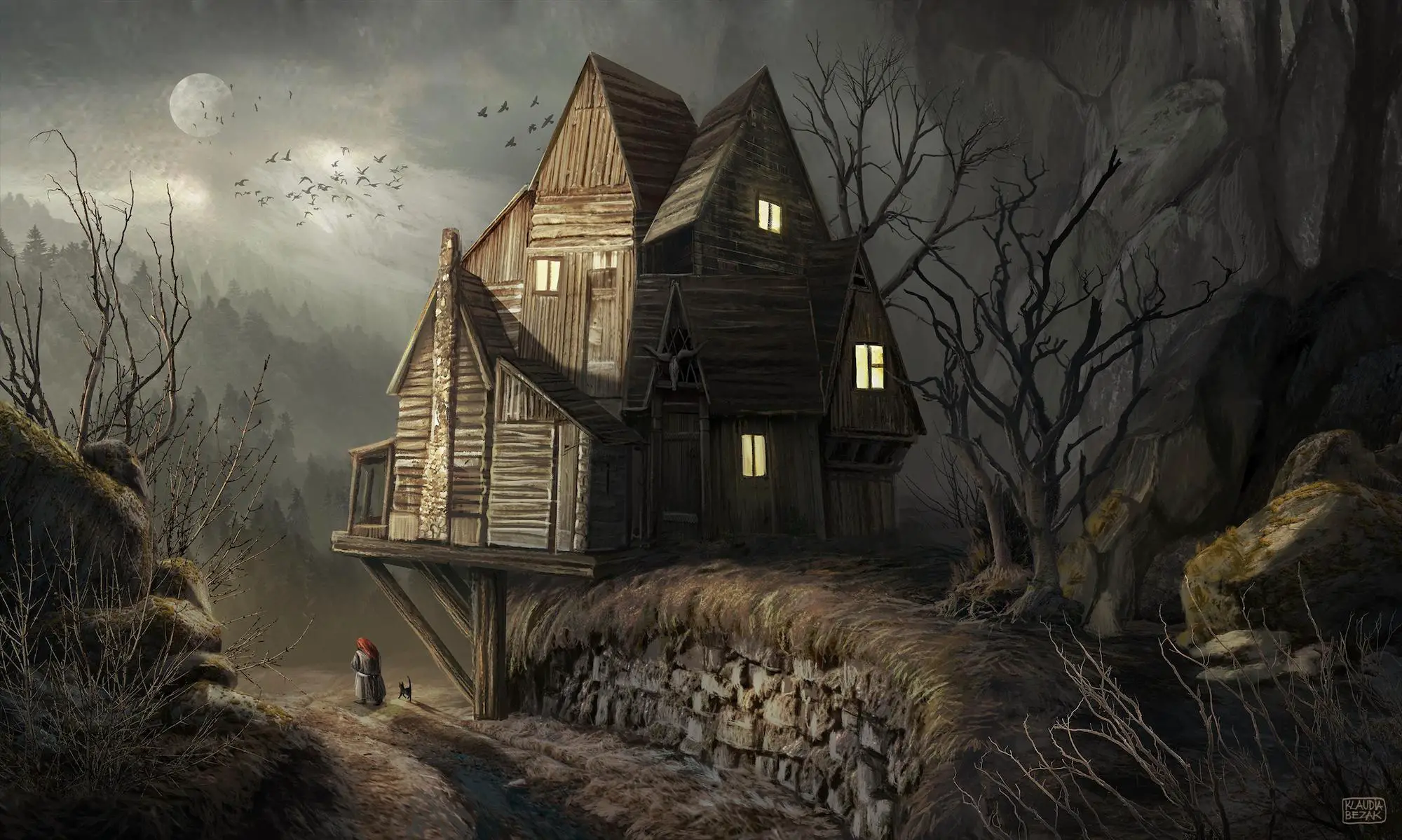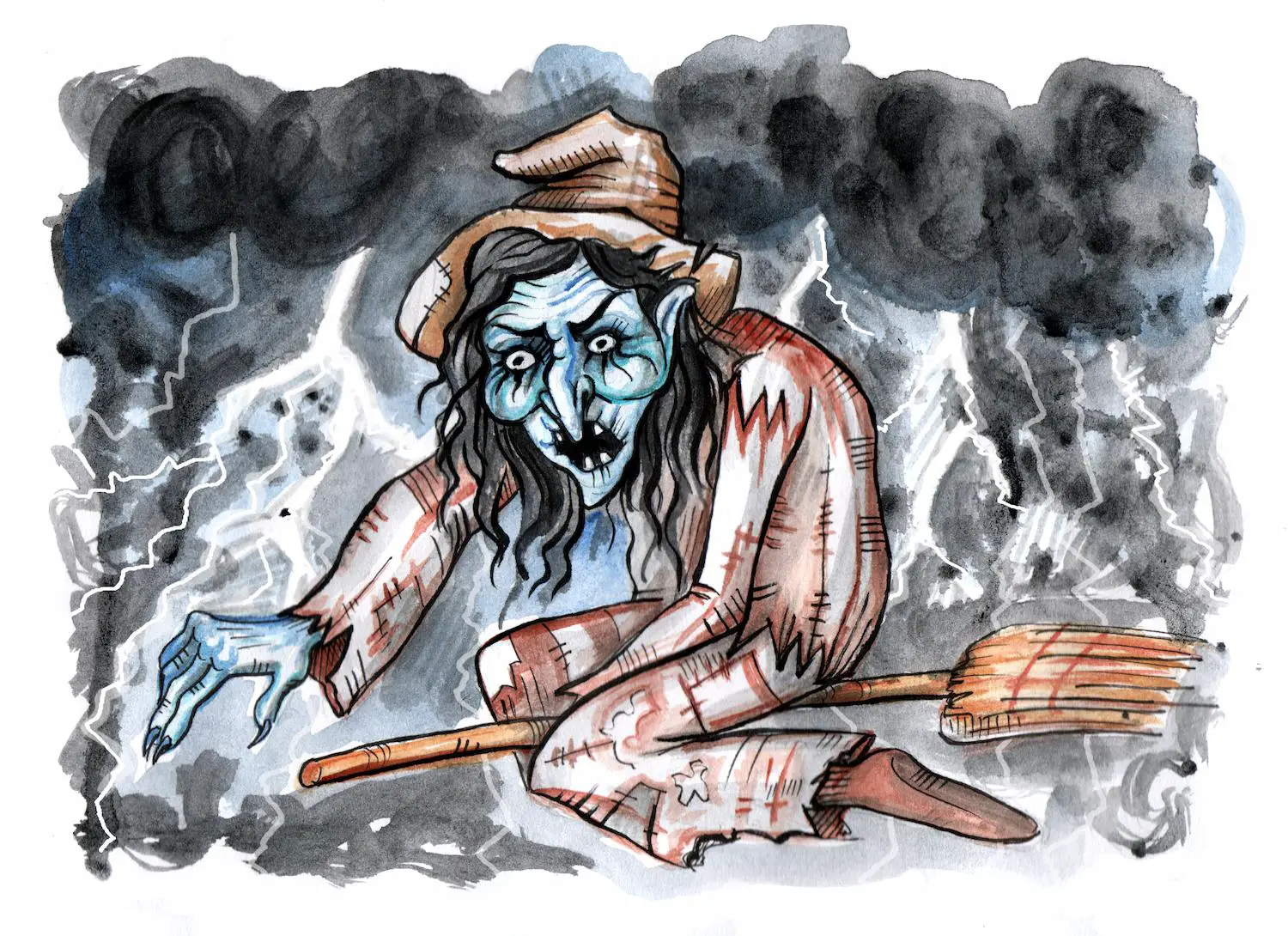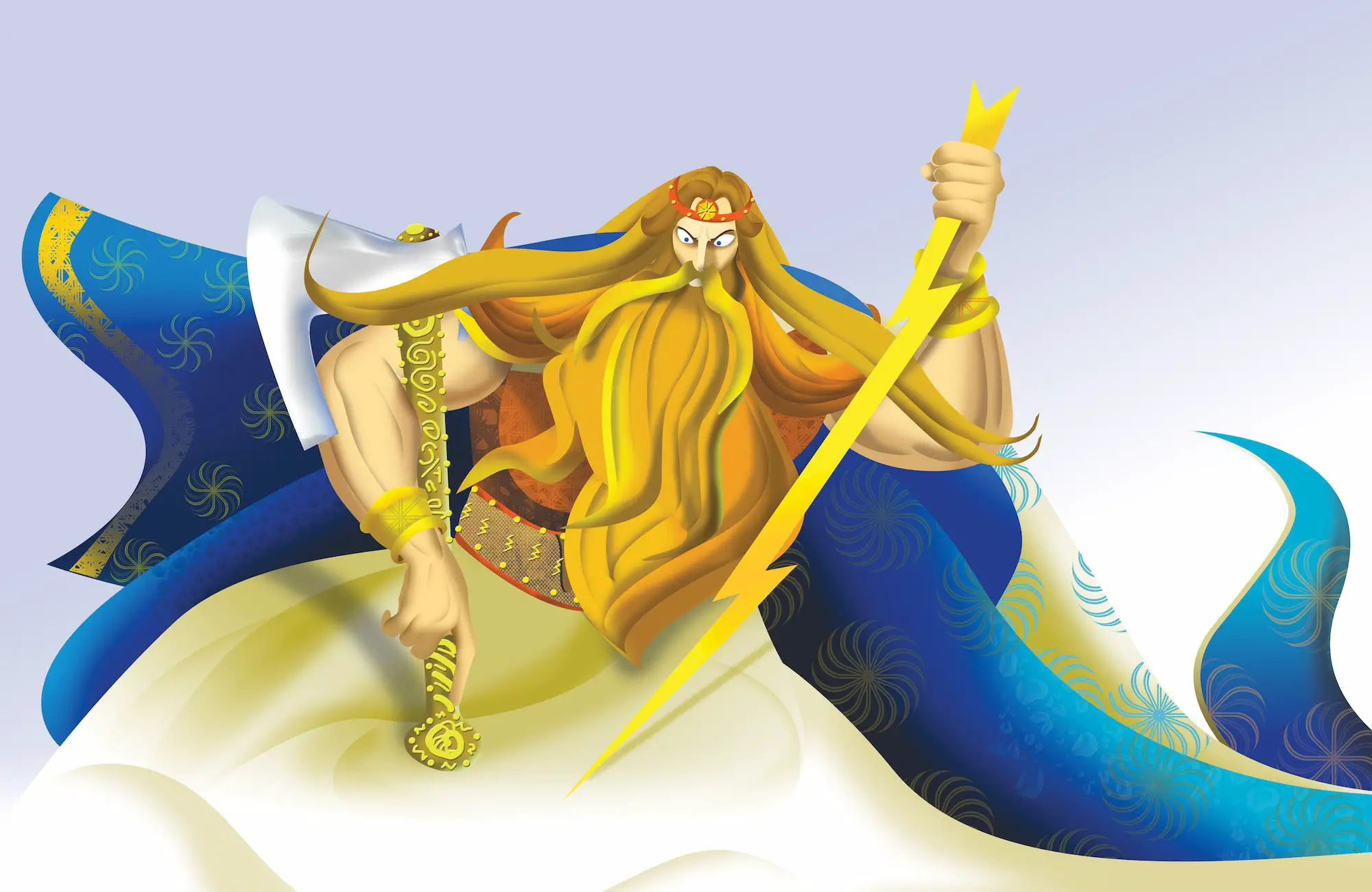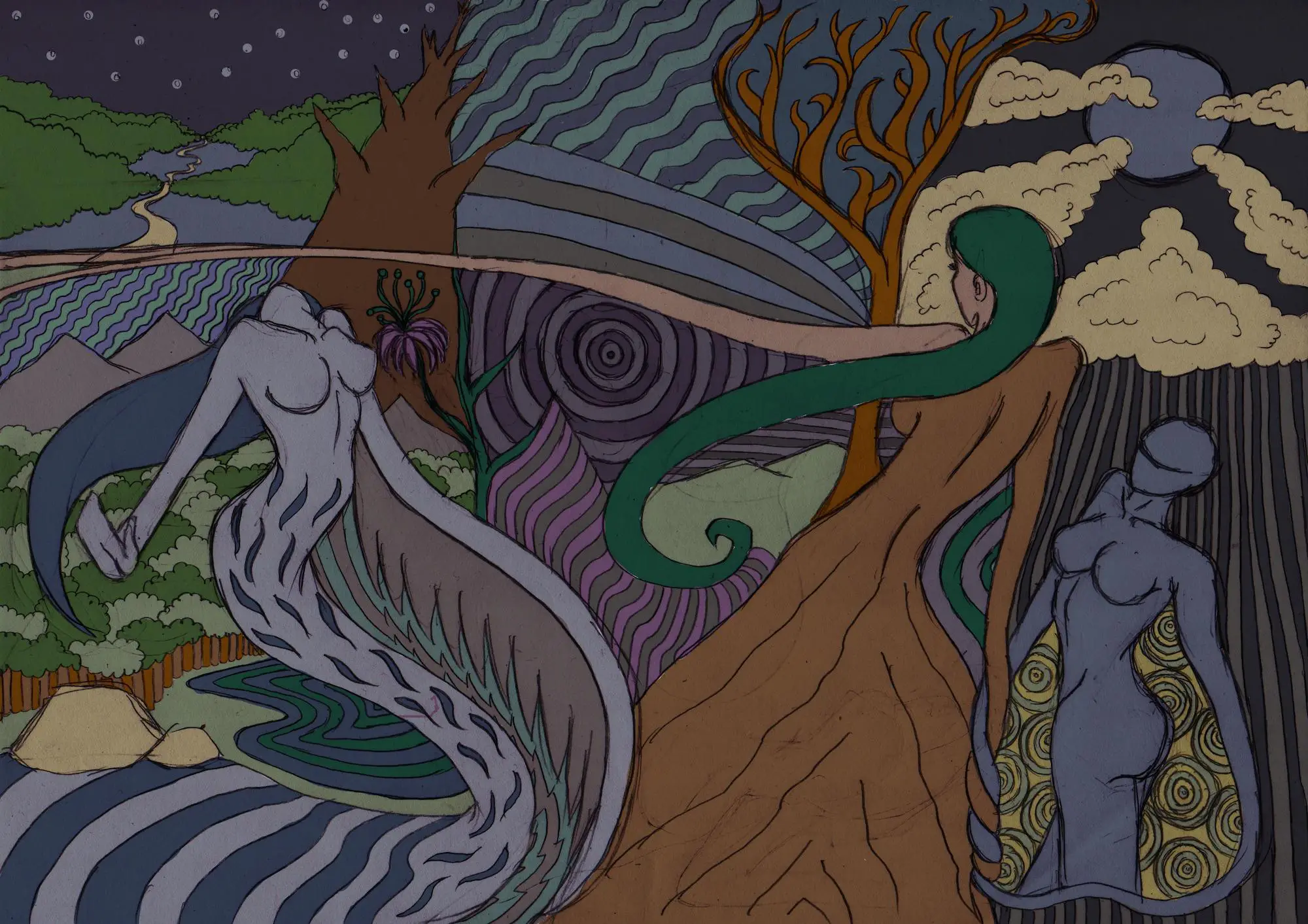Today’s popular culture is familiar with creatures like vampires and strigoi that derive from ancient Slavic demonology, however, the concept of Slavic mythology and all its features remains a mystery to many.
The Slavic myths and religion are mainly associated with the gods’ names that have significant references to Eastern Europe’s ancient folklore treasures, such as Veles, Triglav, Perun, and Svantevit.
The historical remains of oral and written history about Slavic mythology and the so-called Slavic paganism or Slavic religion rely on a very scarce number of artifacts and archaeological facts.
It is also worth mentioning that most of the findings and surviving testimonies of Slavic mythology were written after the period of Christianization when the Slavic religion was rapidly declining.
According to historians, Slavic religion or Slavic paganism describes the myths, rituals, and religious beliefs that the Slavs had and practiced before Christianization spread between the 8th and 13th centuries.
At the time, the South Slavs, who settled on the Balkan Peninsula, bordered with the Byzantine Empire to the south and were influenced by Eastern Orthodox Christianity whose beginnings were marked with the implementation of the writing systems – the Glagolitic script and the Cyrillic script in the 9th century by the brothers’ Saint Cyril and Methodius.
The East Slavs adopted Christianity in the 10th century by Vladimir the Great of Kievan Rus. The West Slavs, on the other hand, were influenced by the Roman Catholic Church from the 12th century and experienced simultaneous Christianization and Germanisation.
However, the Slavs expressed strong resistance to Christianization and it took centuries before the pagan elements were overthrown, some of them never completely.
According to the accounts in “Chronica Slavorum”, the deities of Slavic religion were arranged as hierarchical powers led by a supreme god in the universe who was the god of the gods and goddesses.
According to the ancient Slavic folk belief, the world was organized through oppositional and, at the same time, complementary duality expressed by the supreme God.
This duality was articulated through the White God (“Belobog”) and Black God (“Chernobog”) that represented the masculine and feminine deities (earthy and heavenly).
Table of Contents
Slavic Goddesses
Here is a list of 15 Slavic goddesses that you should know about when learning more about Slavic mythology:
1. Vesna
In ancient Slav mythology, Vesna was the goddess of spring and fertility. She was in charge of springtime, morning, and the birth of everything alive. She is also known as Zhiva, Diva, and among Poles as Devana.
Vesna is portrayed as always smiling, beautiful, naked and barefoot. Sometimes using only a few leaves of fern and some flowers for clothes. Her hair is long, almost to her knees and various different flowers are in her hair as decoration. Her breasts are large as expected from the goddess of fertility.
Sometimes there’s an apple in her right hand and some grapes in her left hand and sometimes there’s a swallow, the symbol of spring, on her right index finger and a bouquet of flowers in her left hand to symbolize marriage. It was believed that she carried the smell of spring with her wherever she goes and that all spring’s scents are signs of her passing through there.
2. Morana
Morana (Morena, Mara, Maruha) is the goddess of death, of winter and of night. In some Slavic tribes, she is also the goddess of unhappiness in love. Repulsive and frightening, this goddess has the ability to transform herself, if necessary, into a swarthy, beautiful and seductive girl.
3. Devana
Polish Slavs called Vesna Devana. Devana was the goddess of hunting and forests. Etymologically, her name derives from the Roman goddess equivalent “Diana” and it is also associated and related to the Greek goddess “Artemis.
Devana is also known by the name of “Ciza” whose etymological roots can be found in the Slavic “cec” or “cic”- a root word that describes the breast of a mother.
The name variations of the goddess Devana are Zizilia, Didilja, and Dzydzilelya. West Slavs also celebrated Devana as the goddess of fertility, love, infancy, and wedding, and her name was explained as “someone who takes care of the new generations”.
These traits have made Devana associated with the Roman goddess Venus or Lucina. In addition, some historical records describe Devana as a manifestation of Rodiva-Deva, the great fertile goddess who brings fruitful and fertile life on earth, and she was also compared to Nerthus a Germanic goddess with the same traits.
4. Perperuna or Dodola
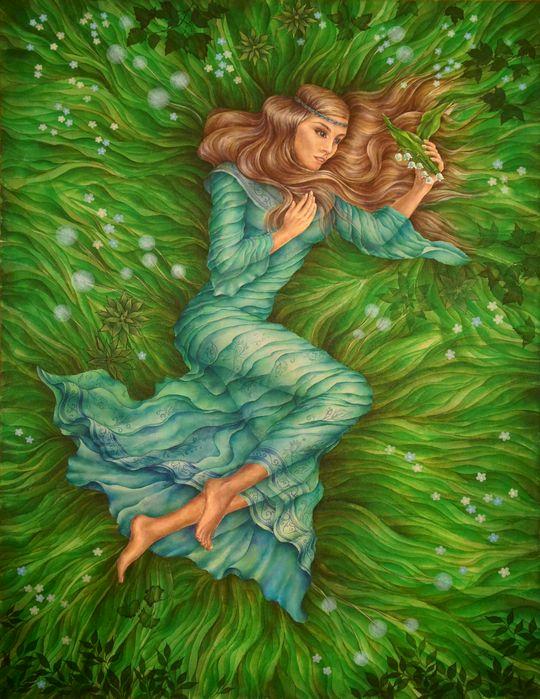
Perperuna was a goddess of rain and the wife of Perun who was the highest god of the pantheon and the god of the thunder in the sky who brought rain and lightning but also law, order, and fertility.
According to ancient beliefs, Perperuna was the goddess of rain, therefore, rain fell on earth when Perperuna would milk her cows up in heaven.
Perperuna was a goddess of rain and the wife of Perun who was the highest god of the pantheon and the god of the thunder in the sky who brought rain and lightning but also law, order, and fertility.
According to ancient beliefs, Perperuna was the goddess of rain, therefore, rain fell on earth when Perperuna would milk her cows up in heaven.
Perperuna was also known as Dodola, which a variation of her name as identified with the god of air Dodol. Dodola was the southern equivalent of the West Slavic name Zizilia whereas a Bulgarian version of this name is Didjulja.
Image: amberelena83 /DeviantArt.com
The name Perperuna is actually the feminine form of the name of her husband Perun while the other name version Dodola means “the one that makes thunder”.
Perperuna is also associated with Norse mythology and the goddess Fjörgyn.
The rituals performed among South Slavs who celebrated this goddess exist even today in the forms of prayers and songs called “dodolki” that are sung by young women who gather to dance and sing as a plea for rain in the time of drought.
Also, it is believed that during spring Perperuna flies over the forests and meadows and brings lushness to the flora and blossoms to trees.
5. Kupala
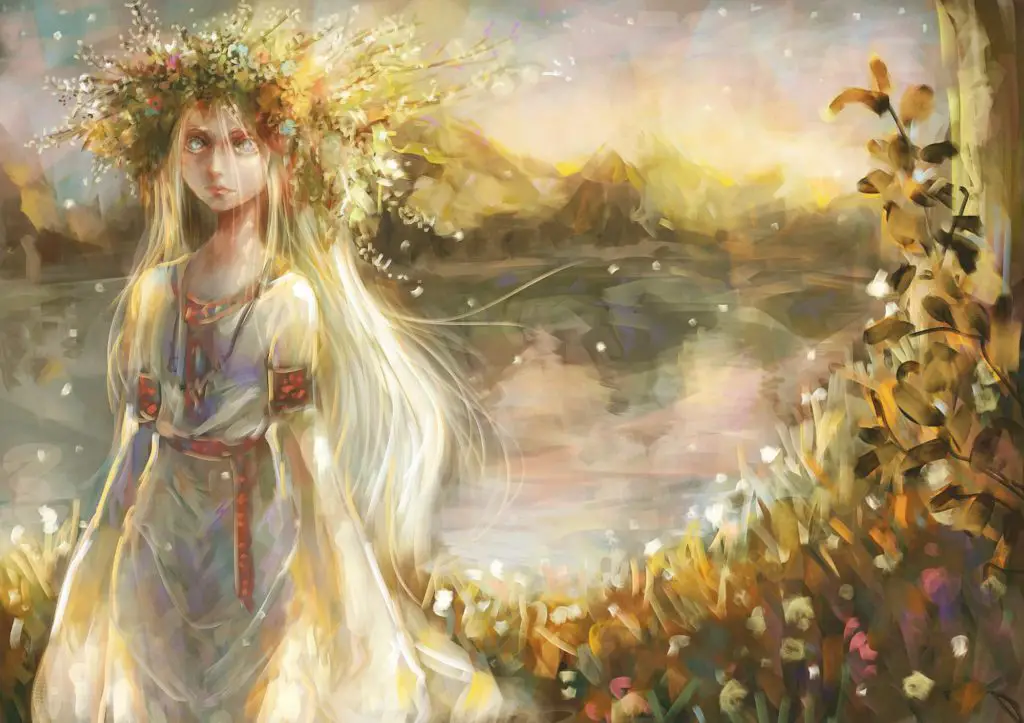
Kupala is a Slavic goddess of joy and water. She is also associated with the sun during the summer solstice. Kupala is celebrated on Kupala Night when rituals of purging and purification are being performed with water and fires.
Some historical versions describe this Slavic goddess as a male god and turn the name Kupala to “Kupalo”. However, the etymology of the name is associated with the verb “kupa” which can be translated into “give bath, clean, water”.
Kupala is also known by the name of “Solntse” which means “sun” as the goddess of the warm, bright sun.
When Christianization took over, Kupala and the related cult were Christianized as the cult of John the Baptist.
6. Lada
The Lada goddess is described as a great goddess of Earth, joy, balance, and harmony.
Among the many Slavic deities, Lada is a goddess that represents beauty, youth, fertility, love, and spring.
Lada was the mother of the twins’ Dido and Dada, also known as Lel and Polel when described as a Polish goddess and she was also the wife (or in some versions the mother) of Lado.
Some historical evidence shows that Lado is the same god-like creature in Slavic mythology but a phallic god conceived as a male.
According to this version, Lada is the female counterpart of Svarog.
Some historians claim that the cognate of Lada is the Greek goddess Leda or the Greco- Roman Leto or Latona. Also, the cognates of her twin sons Lel and Polel are Leda’s twins called Castor and Pollux.
7. Marzanna
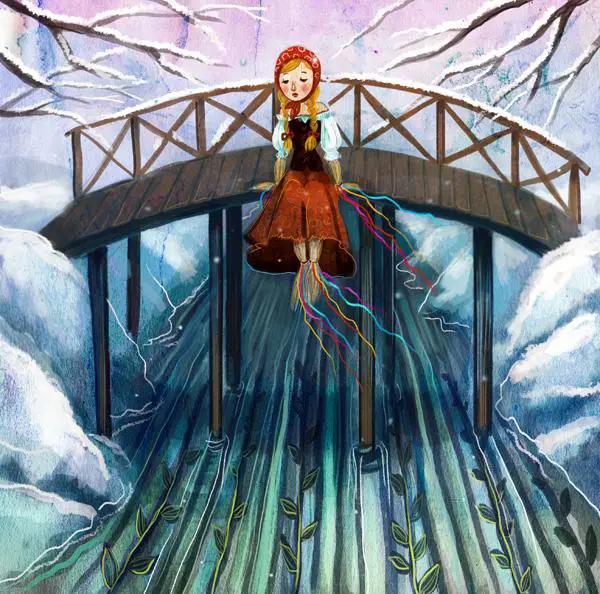
Among Slavic gods and goddesses, there is a goddess of agriculture who is presented as a rural goddess that grows sprouts but also as the goddess of winter and death.
Marzanna is also known for her male counterpart which is the god “Marovit” which is a symbol that stands for the dying sun.
Etymologically, the name of Marzanna can be observed through its root “mar” which means “weakness”, “death” or “ruin”.
Among Slavic gods and goddesses, there is a goddess of agriculture who is presented as a rural goddess that grows sprouts but also as the goddess of winter and death.
Marzanna is also known for her male counterpart which is the god “Marovit” which is a symbol that stands for the dying sun.
Image: Vasylissa /DeviantArt.com
Etymologically, the name of Marzanna can be observed through its root “mar” which means “weakness”, “death” or “ruin”.
Another goddess from the group of Slavic gods and goddesses associated with death and destruction is Baba Yaga.
According to the American archeologist and anthropologist Marija Gimbutas, the cognate of Marzanna is the Indic goddess Kali which represents death and mortality as aspects of the supreme goddess of Old Europe.
8. Mokosh
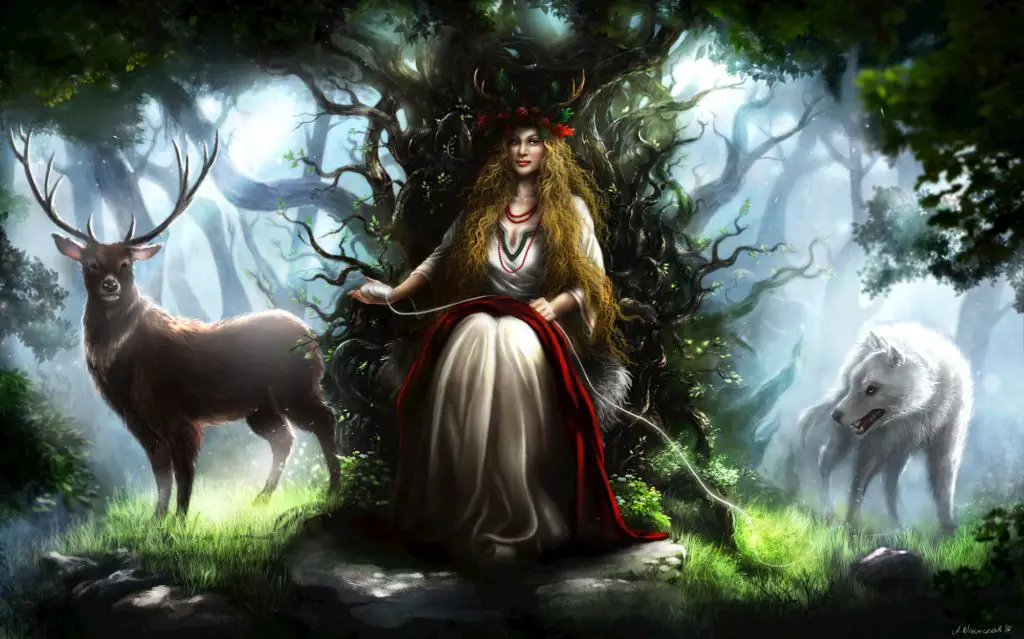
Mokosh is the goddess that represents handwork such as weaving and harvest and she is also associated with wet, fertile earth.
Mokosh is also called “Grain Mother” as she is considered the mother of grain and some of the meanings and interpretations of her name are also “moisture” and “wetness. Moreover, she is also called “Matka” and “Mat Syra Zemlya” which means “womb” or “Damp Mother Earth” respectively.
According to the myth, when Mokosh is associated with Perun, her dry, fiery sides prevail and she turns into Ognyena.
In addition, when she is associated with Veles, she becomes frozen, dry, and unfaithful.
When Christianization was introduced, Mokosh became the “Black Madonna” or Saint Paraskevi of Rome (Virgin Martyr).
9. Chislobog
Chislobog was the goddess of time and calculation and her name means “a giver of numbers; someone who gives numbers”.
This goddess is also associated with the lunar month and the influences of the moon. The lunar month is actually the time the Moon takes to pass through each of its phases known as a new moon, half-moon, and full moon before its returns to its original, initial position.
In mythology, Chislobog is presented as a young girl with a crescent moon on her forehead.
The Wends called her “Kricco” and considered her as the protectress of crops. These Slavic people lived in East Germany near Bautzen and Cottbus in an area that was called Lusatia, therefore they were known as Lusatian Serbs.
10. Karna
Among the Russian god and goddesses is Karna who was a goddess that represented mourning, tears, and funerals.
Karna personifies the shedding of tears during sorrowful times, especially when life ends.
It was believed that the sorrowing goddess visits when funerals take place therefore rituals and ceremonies during the final farewells were performed in her honor.
11. Kostroma
Kostroma was the goddess of fertility, new life, and spring. She is connected to grain, agriculture and fertile soil therefore celebrated during the time of harvest.
Her male counterpart is Kostromo and her celebration is on June 29 at the Christian Feast of Saints Peter and Paul.
During the religious celebration, a maiden from a village is chosen and she is the one who represents the deity. The maiden is ritually bathed in a stream and then worshiped by the attendees who dance and have a feast.
This fertility deity in mythology is also represented by the twins Kostroma and Kostromo.
12. Lelia
Lelia is the goddess of mercy, joy, and spring. She is the daughter of Lada and the cognate of the Greek goddess of nature and hunting and the sister of the supreme god Zeus, called Artemis. Lelia is also associated with the constellation Ursa Major or “The Big Bear”.
13. Matergabia
Matergabia is the goddess of hearth and her name can be translated as “Fire Mother”. Her cognates are the Roman goddess Vesta and the Baltic Gabija. Vesta is the virgin goddess of home and family in Roman religion and she was represented by a fire lit in her temple while Gabija is the female spirit of fire in Lithuanian mythology.
14. Ognyena
The name of the goddess Ognyena means “fierce” or “a woman on fire” and she has been described as the goddess of celestial fire and the sister of the god Perun.
It has been said that Ognyena is actually a personification of the earth goddess Mokosh when she expresses divine fieriness.
In the South Slavic tradition, Ognyena can often be encountered under the name of Ognyena Maria while in Christian folk religion she is syncretized with Virgin Mary and Margaret the Virgin.
15. Ozwiena
In Slavic mythology, Ozwiena is known as the goddess of echo, so, understandably, her cognate in Greek mythology is the nymph Echo.
The figure of Ozwiena is associated with communication and divulgation of deeds, thoughts, and discourses.
She is also considered the goddess of gossip who was revealing secrets. According to the myth, when Ozwiena didn’t like somebody, she distorted the meaning of words.
Ozwiena was also considered the goddess of glory and fame and she was responsible for telling the stories of heroes. In Slavic mythology, it was also said that Ozwiena accompanied the god Veles.
16. Baba Slata
The name of Baba Slata means “Golden Old Lady”. This goddess was worshiped not only by Slavs but also by the Finno-Ugrics who lived along the Ob River.
Baba Slata is also represented by two other deities- Baba Gvozdenzuba which can be translated as “Iron- Tooth Old Lady” and Baba Korizma, meaning “Lent Old Lady”. Baba Slata’s cognate in Greek mythology is the Greek god Hecate.
17. Ursula
Ursula is the goddess of the Moon and the mother of stars associated with the constellation Ursa Minor.
Historians relate Ursula to her cognate, the German goddess Urschel and the Greek goddess Artemis.
In Latin, “ursa” means a “she-bear”, a creature with great strength. Ursula was also considered a teacher of fearlessness and martial arts.
Today, the celebration of this goddess is mainly connected to September 21 which is considered a moon festival (and the festival of the equinox in some cultures) which honors Ursula with a special feasting ceremony and rituals.
18. Letnicha Lola
Letnicha Lola is the goddess of beauty, love, attraction, and sexuality. She plants love in the hearts of all gods and men. She is represented as a tall slender woman, with delicate features and long golden hair. The Goddess is the embodiment of divine beauty and eternal youth.
19. Maya
In Slavic mythology, Maya is one of the divine forces of nature, the force that gives life – the sun with the rain. Maya is therefore a goddess of nature, regarded as the bearer of the gifts of crops. She is often depicted as a beautiful mature woman, holding heads of grain and ripe fruit. She is one of the most revered Slavic goddesses.







